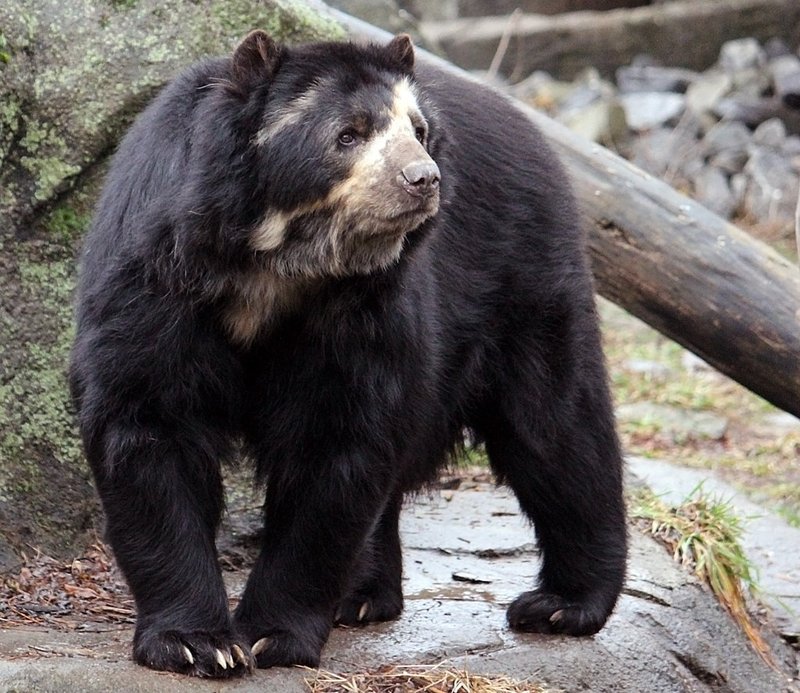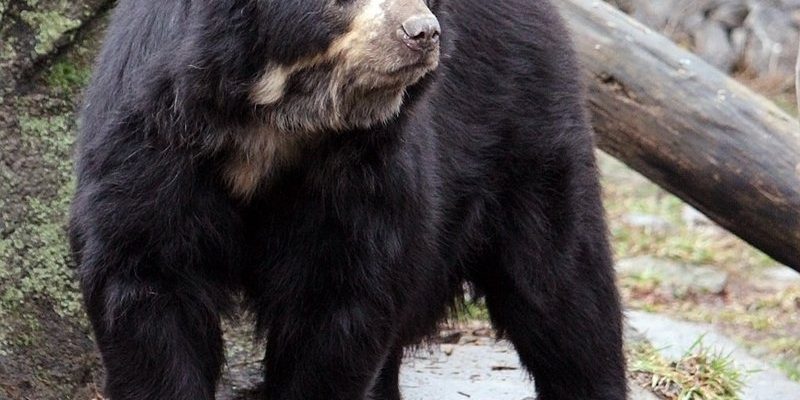
You might be wondering why they’re called “spectacled” bears. It turns out that their facial markings resemble a pair of glasses, which adds a touch of personality to these fascinating animals. They’re not just about looks, though; these bears have some really interesting characteristics and habits that make them one of a kind. So grab your favorite mug, settle in, and let’s dive into some of the most captivating facts about the spectacled bear.
1. Unique Facial Markings
Spectacled bears are easily recognizable thanks to their distinctive facial markings. These markings can come in various patterns ranging from light yellow to cream. Each bear has its own unique design, like a fingerprint! This not only helps researchers identify individual bears but also plays a role in communication between them.
These markings can help mothers identify their cubs in the wild. For instance, when a cub is lost in the dense foliage, a quick glance can guide a mother back to her little one simply by recognizing those special markings. It’s a fascinating adaptation that shows how nature works in subtle yet impactful ways.
2. The Only Bear Species Native to South America
While there are several bear species around the world, the spectacled bear holds the title of being the only bear species native to South America. They inhabit the Andes mountain range, which stretches through several countries including Venezuela, Colombia, Ecuador, Peru, and Bolivia.
These bears are well adapted to their mountainous homes. They thrive in cloud forests, where the dense vegetation provides both food and shelter. The altitudes can be challenging, reaching up to 13,000 feet, but spectacled bears are perfectly equipped for this environment, thanks to their sturdy bodies and strong limbs. This ability to navigate steep and rugged terrains makes them truly remarkable.
3. Omnivorous Diet
When it comes to their diet, spectacled bears are omnivores, meaning they eat both plants and animals. However, they primarily munch on fruits, leaves, and nuts. In fact, a big part of their diet consists of tree fruits like avocados and palms, which are abundant in their forest homes.
They also enjoy insects and small mammals on occasion, adding a bit of variety to their meals. This flexibility in their diet helps them adapt to the changing availability of food sources. For instance, during certain seasons, they might focus more on fruits, while at other times, they may seek out insects or small animals. Honestly, their ability to switch things up is pretty impressive!
4. Excellent Climbers
Spectacled bears are renowned for their climbing skills. They often ascend trees to find food or escape threats. With their strong claws and remarkable balance, they move swiftly among the branches, much like a monkey.
This tree-climbing behavior serves multiple purposes. For one, it helps them access fruits that grow high up. For another, it’s a great way to avoid predators. Imagine having the ability to effortlessly leave the ground and find safety above, where only the treetops await you. That’s the life of a spectacled bear!
5. Gentle Giants
Despite being large animals, spectacled bears are generally known for their gentle demeanor. They are more likely to avoid confrontation than engage it. While they can be protective of their territory, especially females with cubs, they often prefer to retreat and find a safe space rather than fight.
This gentle nature makes them fascinating to observe. If you ever have the chance to see them in the wild or in a sanctuary, you might notice how they interact peacefully with their surroundings. It’s a refreshing reminder that not all large animals are aggressive and that kindness can be part of their character, too.
6. Endangered Status
Sadly, the spectacled bear is classified as vulnerable, with their population declining due to deforestation, habitat loss, and poaching. As humans continue to encroach on their habitats, these bears face increasing challenges to their survival.
Conservation efforts are crucial to protect this unique species. Organizations are working to raise awareness and create protected areas where these bears can thrive. By supporting such initiatives, we can help ensure that future generations will also have the chance to learn about and appreciate these remarkable creatures.
7. Reproductive Behavior
Spectacled bears have a fascinating reproductive cycle. Breeding typically happens between March and May, although it can vary depending on the location. After a gestation period of about 8 months, female bears give birth to one to three cubs, usually in a secluded den, which helps protect them during their vulnerable early weeks.
Cubs are born blind and rely entirely on their mother for nourishment and protection. Over time, they grow quickly and start to explore their surroundings, often staying with their mothers for up to two years. This extended parental care is essential for their development, as it gives them valuable lessons for survival.
8. Cultural Significance
In many South American cultures, the spectacled bear holds significant cultural importance. They appear in myths and folklore, often symbolizing strength and wisdom. For instance, in some Andean traditions, they are seen as guardians of the forest, embodying the spirit of nature.
This cultural significance helps connect local communities to their environment. By respecting and preserving the bear and its habitat, people also honor their traditions and heritage. It’s amazing how interconnected our lives can be with the natural world around us.
9. Conservation Programs
Several conservation organizations are dedicated to protecting the spectacled bear. Programs focus on habitat restoration, anti-poaching efforts, and raising awareness among local communities. For example, educational campaigns encourage coexistence with these bears, highlighting their importance in the ecosystem.
Supporting these initiatives can make a tangible difference. Even small actions, like spreading awareness or participating in local conservation efforts, contribute to a broader movement to ensure that these unique bears continue to roam the Andes for generations to come.
10. Their Future: Challenges and Hope
The future of spectacled bears is something we should all care about. As climate change and habitat destruction continue, these bears face increasing challenges. However, there’s hope. Scientists, conservationists, and local communities are working tirelessly to protect these animals and the ecosystems they inhabit.
With more awareness and support, we can help create a future where spectacled bears not only survive but thrive in their natural habitats. It takes collective effort, but by learning about and advocating for these bears, we can make a difference.
In summary, the majestic spectacled bear is not just a beautiful creature but also a vital part of the Andean ecosystem. By appreciating these fascinating animals, we can work together to ensure their survival and celebrate the diversity of life on our planet. So next time you think of bears, remember the spectacled bear and the wonders they bring to the world.

